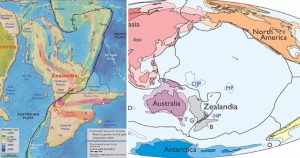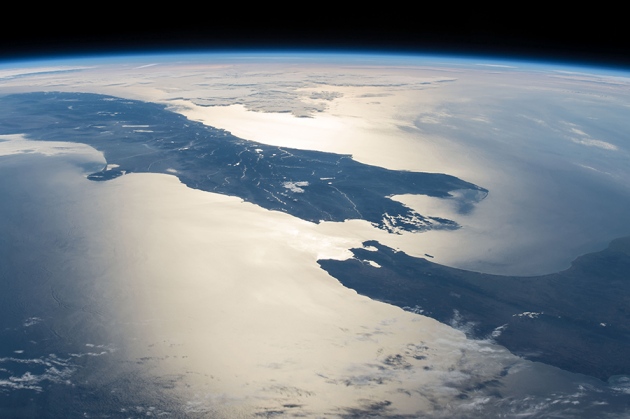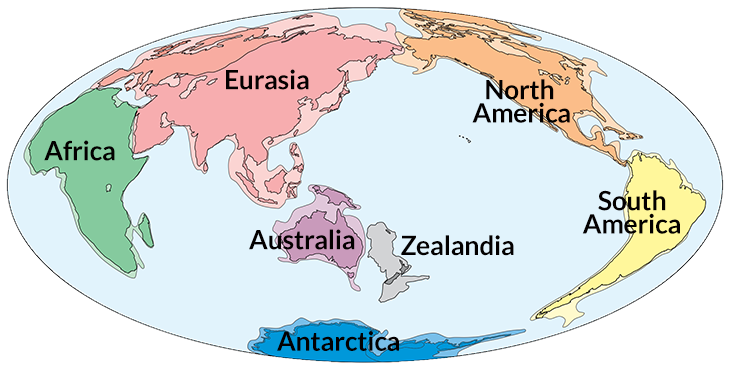
The Lost Continent ‘Zealandia’ Was Not Always Submerged! Says Study
The idea of ‘Eight continent’, so far considered as one of the much-awaited mysteries like Bermuda Triangle. Earlier in various historical archives, people went identifying the presence of an unknown continent-sized land in between North America and Asia, fast forward the plethora of theories, scientists are now finally taking the matter seriously and a group of experts is all set to find out the mystery behind this.
The announcement about this odyssey came on 28 July 2017, the sole objective of this project is unlocking the secrets of the lost continent ‘Zealandia’. It is believed that the continent is mostly submerged, is said to have sunk after breaking away from Australia 60–85 million years past.
In a paper published by Geological Society of America’s Journal GSA in February, Researchers stated that Zealandia should be considered as a distinct continent as it met all the criteria applied to Earth’s other continents, including elevation above the surrounding area, distinctive geology, a well-defined area and a crust much thicker than that found on the ocean floor.
Coming to the location- extending from south of New Zealand northward to New Caledonia and west to the Kenn Plateau off Australia’s east, it encompasses five million square kilometers. Drillship Joides Resolution will recover geological samples from beneath the seabed in order to uncover crucial facts about oceanographic history, extreme climates, sub-seafloor life, earthquake-generating zones, and plate tectonics
Earlier, in February, lead author Nick Mortimer in his scientific paper said that experts had been gathering data to make the case for Zealandia being a continent for more than 20 years. However, all their efforts were in vain as it was in the region of high tide.

Finalizing the Odyssey’s details, Neville Exon of Australian National University said that this two-month long expedition would also help the scientists develop a better understanding of major changes in the global tectonic configuration and other discoveries of the new species.
Disclosing the inside details of the mission, authorities stated that the scientific expedition is called Expedition 371, and is funded by the National Science Foundation and the International Ocean Discovery Program.
• Precisely, 30 scientists are included in the team aboard the JOIDES Resolution, a massive scientific drilling ship. The total duration of the trip is expected to be around two months.
• The project begins with the group drilling deep into the continent’s crust or upper layer.
• ‘Joides Resolution’ the drillship aims to recover sediments and rocks lying deep beneath the seabed in a bid to discover how the region has behaved over the past tens of millions of years.
• Events that altered the position of both water and land on Earth will be studied w.r.t ocean currents and the climate.
• Each core will be between 1,000 feet and 2,600 feet, meaning that scientists can peer back in time over tens of millions of years.
• Six visiting sites are declared, located in the Tasman Sea between Australia and New Zealand to drill cores of sediment and rocks from the Earth’s crust.
After all the latest researches done on this place, researchers found significant new fossil discoveries that prove Zealandia was not always as deep beneath the waves as it is today.

Gerald Dickens of Rice University in the US has said, “More than 8,000 specimens were studied, and several hundred fossil species were identified.”
He added, “The discovery of microscopic shells of organisms that lived in warm shallow seas, and of spores and pollen from land plants, reveal that the geography and climate of Zealandia were dramatically different in the past.”
The vital reason that brought the drastic changes to this place are found as the “Pacific Ring of Fire”, an active seafloor zone along the perimeter of the Pacific Ocean, that resulted in changing the ocean depth and volcanic activity and buckled the seabed of Zealandia, it is believed that this happened 40 to 50 million years ago. The experts added that Zealandia was submerged when it separated from Australia and Antarctica about 80 million years ago.
Rupert Sutherland of Victoria University of Wellington in New Zealand added, “That is still probably accurate, but it is now clear that dramatic later events shaped the continent we explored on this voyage. Big geographic changes across northern Zealandia, which is about the same size as India, have implications for understanding questions such as how plants and animals dispersed and evolved in the South Pacific.”
After all, on the whole accounts, the discovery of past land and shallow seas now provides an explanation. There were pathways for animals and plants to move over the place.
Related Article: Geologists Have Discovered The 8th Continent Of The World And Its Name Is Zealandia